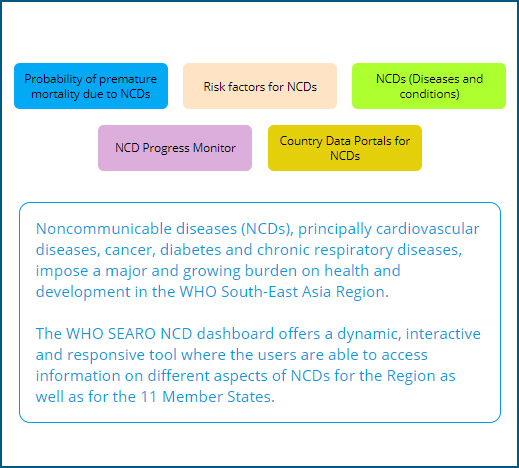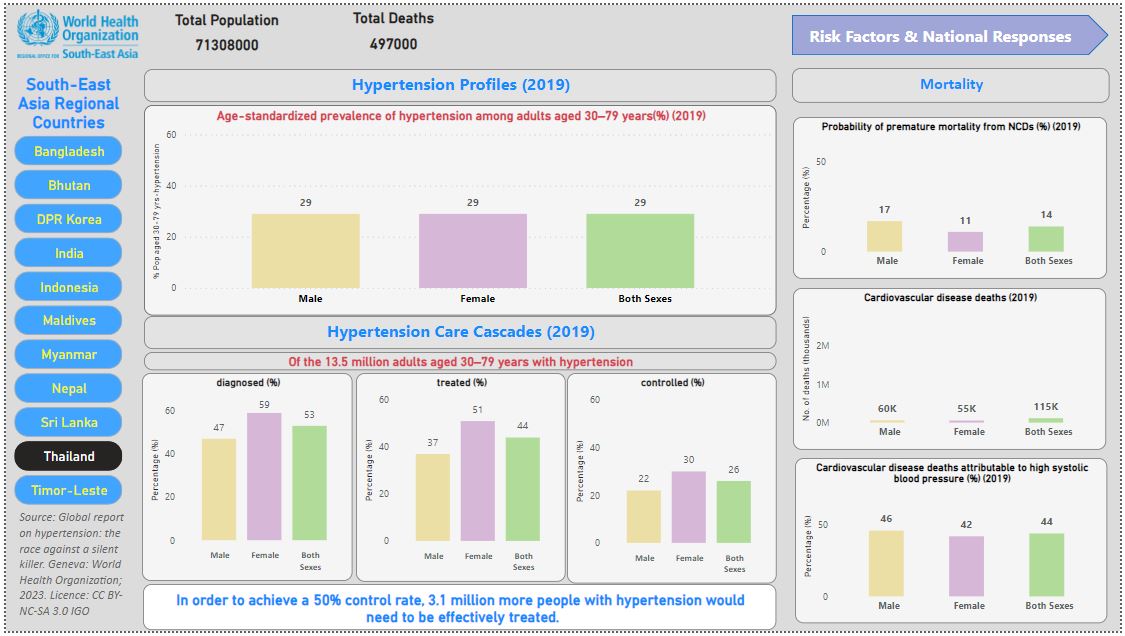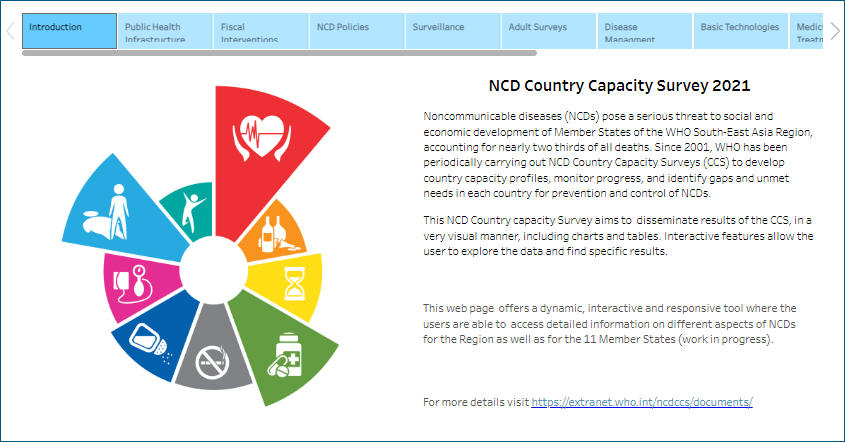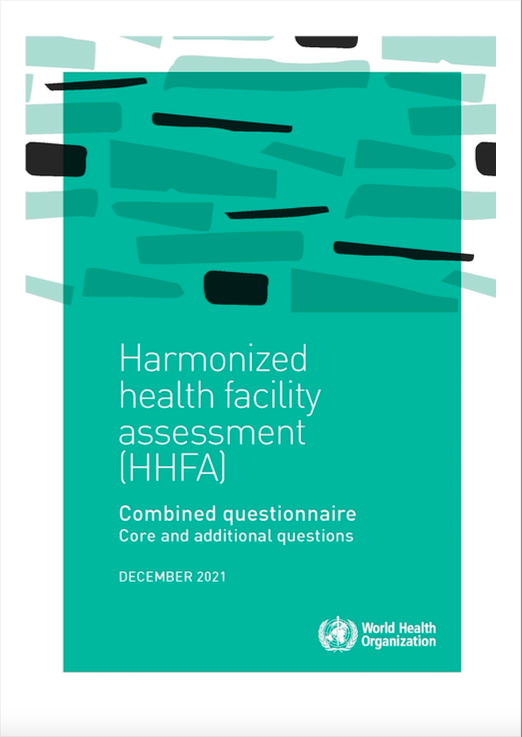
Surveillance and monitoring of NCD
Overview
Noncommunicable disease (NCD) surveillance is a cornerstone of effective public health strategy, enabling countries to monitor trends, assess risk factors, and evaluate the impact of interventions. These efforts are essential for informing evidence-based policies, addressing health inequities, and tracking progress towards global targets. Reliable NCD surveillance not only helps identify emerging threats and vulnerable populations but also strengthens accountability and resource allocation.
NCD surveillance systems, include population-based surveys, facility-based monitoring of NCD services and other setting –specific surveillances. Population-based surveys, are designed to collect standardized data on behavioral and biological risk factors across diverse age groups and settings. These surveys provide nationally representative data that help track trends over time and inform targeted interventions. Facility-based surveillance, focuses on data collected through health systems, including patient registries, hospital records, and electronic health information systems which are crucial for monitoring disease outcomes, treatment adherence, and health service utilization. Together, these complementary approaches enable countries to build a comprehensive picture of the NCD burden, identify gaps in care, and prioritize resources effectively.








